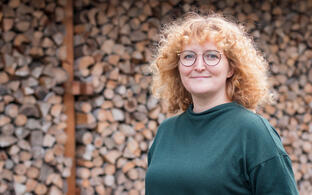
Electron Microscopy
Séverine Kunz
Profil
Die Auswertung erfolgt auf der Basis zweier Transmissionselektronenmikroskope (Zeiss 910, FEI Morgagni), die beide mit hochauflösenden CCD-Kameras ausgestattet sind. Wir unterstützen alle Arten von Kooperationen wie Hilfe bei Präparationen, Service und die Realisierung gemeinsamer Forschungsprojekte.
Team
Service and Technologie
Deploying the electron beam
Our group offers a range of electron microscopic methods to explore manifold specimens from humans as well as model organisms, such as mice, zebrafish or fruit flies. In many cases, immunolabeling of the sample with specific antibodies is required for identifying the cellular structures of interest. Usually, we then deploy a routine preparation procedure known as Tokuyasu cryosectioning technique, in combination with a special in-house developed contrasting method. The approach allows clearly depicting cellular membranes and the inner structure of mitochondria, for example. Another important technique that we perform is the negative contrast, in which the background (instead of the target structure) is stained. Immunolabeling and negative contrast can also be combined.
Using these tools, our group has been investigating heart and muscle cell disorders, stem cells and myelin defects in the brain. We have visualized neurodegenerative proteins as well as nanoparticles for drug development, and characterized various cell cultures. We also compared the well-known mouse model with the naked mole rat, a unique species, on an ultrastructural level. For many projects, available protocols had to be adapted or new sample preparation strategies developed. Recently, we started using a technique known as high pressure freezing, which is particularly suited for preserving the subcellular architecture. Our facility is available for all types of collaborations.
Veröffentlichungen
Nachrichten
Outlook
A 3D dive into the cell
Since 2017, we have a new transmission electron microscope (Talos L120C) at our disposal, opening the door to the future practice of cryo-electron microscopy. We have started optimizing sample preparation approaches and obtaining initial results in structural and cell biology. The device allows electron tomography, in which detailed 3D structures are assembled from microscopic series. Thus, we will be able to visualize small cell compartments such as vesicles and membrane structures and even biological macromolecules in 3D.
Additionally, we envisage a tight collaboration with the Charité university clinic that will establish a new facility for high-end cryo-electron microscopy on the campus in Berlin-Buch.






